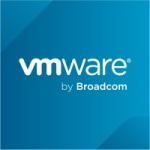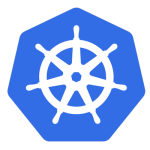What is our primary use case?
We use EKS in our company to run containerized applications. I work in the container ecosystem team, and we manage EKS clusters for our developer teams so they don't have to. We provide them with the necessary tools to run on top of the cluster.
EKS helps us simplify and speed up cluster management. We don't have to take care of cluster updates; we just initiate the update, and AWS handles it. The same goes for some of the AWS-managed add-ons.
How has it helped my organization?
The biggest improvement is that we now have more time. When we shifted the responsibility of cluster management and updates to AWS, we had more time to develop solutions that make life easier for the developers.
Application deployment is more automatic. They don't have to issue cluster commands; they can simply do a commit into our internal GitHub Enterprise, and our tooling will deploy or update the application on the cluster. That's probably the biggest benefit because we had time to develop such solutions.
What is most valuable?
From my personal perspective, I think it's good that we can use AWS CLI to manage the cluster, and that way, we can automate the work via scripts. Of course, the way that we just issue a command and AWS handles the work, like with cluster updates, is also valuable. That's probably one of the reasons why we use it.
What needs improvement?
Sometimes I have trouble because, in our corporate network, there are various networks, etcetera. It's difficult to connect to some of the clusters, and it's easier to go through the UI when troubleshooting something. At some points, the UI seems limited to me with the functions it provides.
You can get information like what kind of port is running on the cluster, but I haven't really explored the UI so far, so it's difficult for me to see the logs, for example. Or sometimes, you are only limited to the basic Kubernetes things.
We have certain customizations installed in the cluster, and for that, you really have to use kubectl from the command line. You are not able to use the EKS UI to list certain custom resources. So maybe there can be some kind of improvement, but maybe it's just me that I haven't really explored the UI that much.
For how long have I used the solution?
I have been using it since February.
What do I think about the stability of the solution?
I don't really remember any issue with EKS, the product from AWS as is. There can be some issues when there is a bigger outage on the AWS side; it's either some kind of network outage when we cannot reach AWS itself or something similar, but I wouldn't blame EKS for it.
When we had problems with the cluster itself, I think it was more about some issue that either we as a team introduced by human error, from some configuration mistake, or our customers sometimes made mistakes. And maybe there are issues when the application running on top of EKS somehow gets into some loop or something and then doesn't work correctly, but I wouldn't really attribute that to EKS.
Because I've been in the team for a short amount of time, I don't really remember any big issue that was caused by EKS itself in the past six months at least.
What do I think about the scalability of the solution?
It is scalable. We use the cluster autoscaler tool that spins up a new node when we need more, and that works nicely. So I think from the scalability point of view, it's okay.
In the last six months, I don't really see any issue with scalability. We run around one hundred clusters. Some of them are quite small, really just the basics where we are running free master nodes in the free availability zones, just to make things according to best practices. So, really a minimal cluster.
And there are also some really big clusters with over a hundred worker nodes. Overall, I think it's quite big. And with EKS, we are able to manage it quite well.
How are customer service and support?
I have some experience with AWS support, and it was good. We were trying to solve something with one of the add-ons, and I think we solved it within a couple of days. We even had a call with one of the support engineers. So I think it worked out well.
The issue was regarding one of the AWS-managed add-ons. I remember that we clearly had some kind of misunderstanding between us and technical support, and it seemed like either we were not able to explain it correctly or the guy wasn't able to understand us. But I remember that somehow we solved that issue. So at the end, it was okay.
How would you rate customer service and support?
How was the initial setup?
The deployment process of EKS was done before I joined the team.
For me, EKS UI is nice, and it was quite easy for me to get familiar with. I find the AWS CLI quite nice to use as well. I've been working in IT for some time now, so I have some level of experience. I guess these things come sort of naturally to me now, such as how to use the tools that are provided by companies. It's usually no issue for me.
From the maintenance point of view, I don't know much about how things are backed up, etcetera. I think that is exactly why we use EKS because we don't really have to take care of cluster backups. We can simply issue a command, and the cluster will update. If we were to do cluster updates manually, it would be more work. We would have to update the worker nodes and then update the master node one by one. AWS now handles all of this. So I think from the maintenance point of view, it's great, and that's why we use it because it's now much more simple and faster for us.
What was our ROI?
We still see the benefits of using this solution because we are using it. And we actually plan to transfer all our workloads to EKS if things were ideal. But for some legal reasons, we still have to manage some on-premise clusters, but I think the benefits are there.
What other advice do I have?
If you have the money, I would recommend the EKS product to other users who are looking into implementing it. It's a good tool. It really takes some of the management burden off your back.
Overall, I would rate it an eight out of ten.
Which deployment model are you using for this solution?
On-premises
Disclosure: My company does not have a business relationship with this vendor other than being a customer.





















